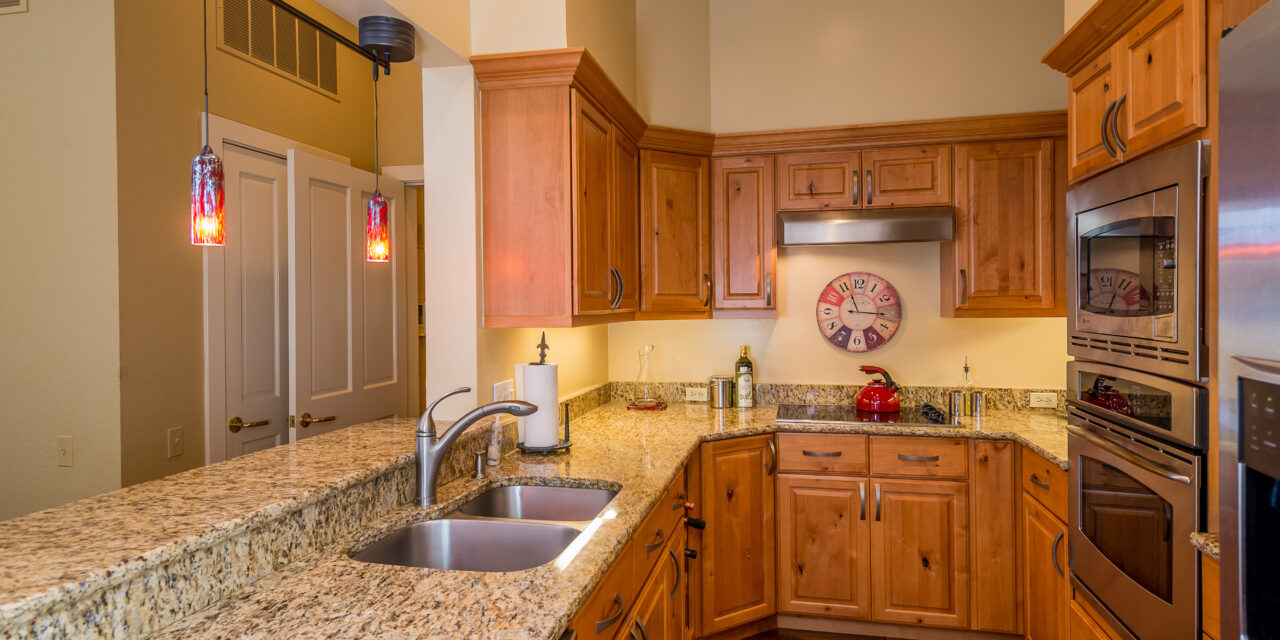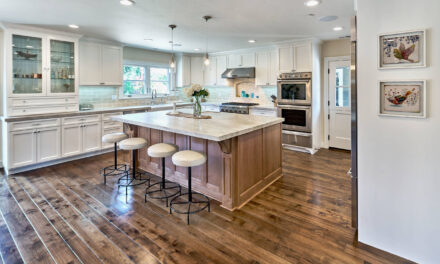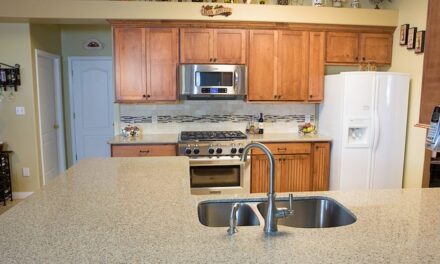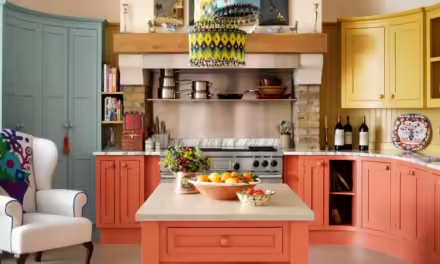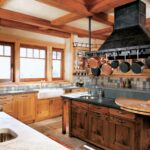Home staging kitchen is a powerful tool in real estate, transforming properties to attract potential buyers by showcasing their full potential. One of the most critical spaces in this process is the kitchen, often considered the heart of the home.
A well-staged kitchen can evoke feelings of warmth, cleanliness, and functionality, helping buyers envision themselves preparing meals and gathering with loved ones. The goal of staging a kitchen is not just to make it look beautiful, but to create a space that feels inviting, practical, and in line with the lifestyle aspirations of potential buyers.
From decluttering countertops and adding simple yet elegant décor to upgrading appliances and ensuring the space feels fresh, home staging kitchen involves a fine balance of aesthetic appeal and practicality. Neutral colors, clean lines, and strategic lighting can all contribute to creating a welcoming atmosphere.
Small touches, such as a vase of fresh flowers or a bowl of colorful fruit, can further enhance the room’s charm. When done right, a well-staged kitchen can leave a lasting impression, helping to sell a home faster and for a better price, by making it easier for buyers to imagine themselves living there.
home staging kitchen Mastery: From Cluttered to Captivating
When selling a home, few areas have as much influence on buyers as the kitchen. The home staging kitchen is the heart of the home, where potential buyers imagine cooking, hosting, and creating memories. An expertly staged kitchen not only appeals visually but also conveys functionality, cleanliness, and a lifestyle buyers aspire to. Let’s dive into the essential steps to transform your kitchen from cluttered to captivating, ensuring it becomes a powerful asset in your home sale. For more information visit here.
Table of Contents
Start with a Deep Clean: The Foundation of Home Staging Success
A clean kitchen makes a lasting first impression. Begin with a deep clean that covers every nook and cranny:
- Scrub appliances, countertops, cabinets, and floors until they’re spotless.
- Use natural, mild cleaning agents that won’t leave strong scents lingering.
- Degrease stove and vent filters, polish metal surfaces, and tackle any mold or mildew buildup around sinks and faucets.
For buyers, cleanliness signals that a home has been well cared for. Staging a kitchen that feels fresh and well-maintained encourages buyers to explore further and imagine themselves in the space.
Declutter: Less is More
Decluttering is the next step. A cluttered home staging kitchen can feel cramped and chaotic, while a streamlined one feels spacious and functional. Here’s how to minimize without making the space look bare:
- Clear countertops of small appliances, decorative items, and excess utensils.
- Limit countertop items to a few essentials, like a coffee maker or a decorative fruit bowl.
- Store personal items like notes, magnets, and family photos. These can distract buyers from the kitchen’s overall aesthetics and potential.
Remember, the goal is to create a home staging kitchen that feels open, airy, and universally appealing.
Optimize Storage and Organize Cabinets
Buyers will likely peek inside cabinets to assess storage options. Creating an organized and spacious feel within your cabinets can leave a positive impression:
- Remove mismatched or worn-out items and donate or discard what you don’t use.
- Arrange items by category, stacking neatly and leaving enough space between objects.
- Use transparent containers or baskets to group smaller items like spice jars or pantry goods.
Organized storage reassures buyers that they’ll have ample space to store their items without feeling cramped, which is a big selling point in any home staging kitchen.
Neutralize the Color Palette
A neutral color palette in the home staging kitchen helps buyers imagine their own belongings in the space. Choose subtle hues that are universally appealing and create a blank canvas:
- If repainting cabinets, choose colors like white, cream, or soft gray for a timeless, fresh look.
- Consider swapping out bright or patterned backsplash tiles for simpler designs, if budget allows.
- Add warmth with wooden accents, such as cutting boards or a small tray, which create a welcoming ambiance without overwhelming the design.
Neutral tones make the space feel cohesive and elegant, allowing buyers to picture their own style added to it.
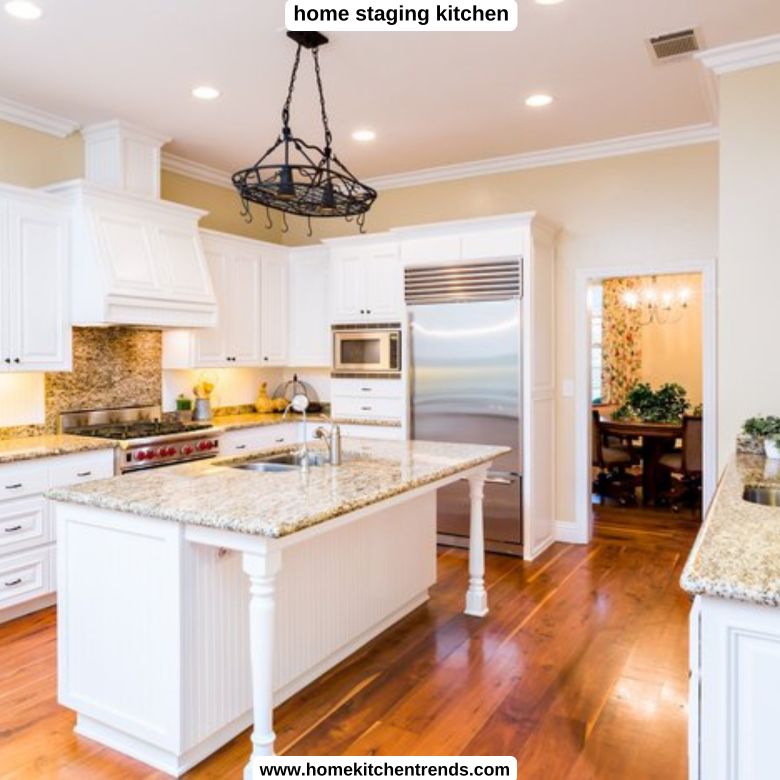
Upgrade Lighting for a Warm, Inviting Atmosphere
Lighting is an essential part of staging that can make or break a kitchen’s appeal. Invest in lighting upgrades to highlight your home staging kitchen best features:
- Ensure bright task lighting is available for areas like the stove, countertops, and sink.
- Add ambient lighting under cabinets or as pendant lights over an island for warmth and depth.
- Replace any outdated fixtures with modern options in neutral tones that complement the overall aesthetic.
Effective lighting makes the kitchen feel brighter and more inviting, which is crucial for creating a warm and comfortable environment.
Showcase Clean Lines with Minimalistic Decor
While minimalism keeps the space uncluttered, a few well-chosen decor items can add personality:
- Use a bowl of fresh fruit or a small vase of flowers as a focal point on the countertop.
- Display a clean, modern cutting board or a set of matching cookbooks.
- Consider placing a single, high-quality decorative item, like a potted plant or a candle, on open shelves.
With minimal decor, you can highlight the home staging kitchen functional space while adding just the right touch of charm.
Add Fresh Scents to Create a Welcoming Ambiance
Scent can influence buyers’ perception of a space, so use it to your advantage:
- Opt for subtle, fresh scents that are universally appealing, like citrus or vanilla.
- Avoid strong or overly floral air fresheners, which can feel artificial and distracting.
- Consider placing fresh herbs like basil or rosemary on the counter. Not only do they add a pleasing scent, but they also bring in a pop of natural color.
Creating a light, fresh-smelling kitchen enhances the overall atmosphere, helping buyers feel at ease as they tour.
Stage a Cooking or Dining Setup for Real-Life Appeal
home staging kitchen setup that mirrors a realistic lifestyle can be a powerful tool in creating emotional connections:
- Set up a small breakfast nook with placemats, utensils, and a coffee cup to showcase the potential for relaxed mornings.
- Arrange a few high-quality ingredients or spices on a tray, such as olive oil and salt, suggesting a space ready for culinary creation.
- If the kitchen has a bar or island, set it as a small dining area with stools, place settings, or a fruit bowl to give buyers an idea of how they could use the space for casual dining.
Setting up these little scenes helps buyers imagine themselves living in the space, making them more likely to develop a personal connection to the home.
Focus on the Flooring: Keep It Clean and Stylish
A home staging kitchen flooring should be spotless and in good condition. Buyers often look down, especially in high-traffic areas, so:
- If possible, replace any worn or dated flooring with a budget-friendly yet durable option like vinyl or laminate in a neutral color.
- If you have hardwood or tile, polish the floors to give them a fresh, well-maintained look.
- Use neutral, easily washable rugs in areas where flooring might show wear, such as near the sink or stove.
Flooring that looks new and clean enhances the overall impression of quality and care in your kitchen.
Highlight Unique Features or Upgrade Smartly
Consider making small upgrades if your home staging kitchen is outdated or has unique features:
- Replace outdated knobs or pulls with modern finishes like matte black or brushed nickel.
- If the budget allows, consider updating small fixtures like faucets or light switches.
- Emphasize unique features, like a built-in wine rack, by staging it with a bottle and glasses.
Upgrades don’t need to be expensive to make a significant impact. Even a few modern touches can elevate the look of the entire space.
Add a Finishing Touch: Stage with Functionality in Mind
A well-staged home staging kitchen is both visually appealing and functional. Pay attention to these final details:
- Consider the flow of movement and ensure nothing feels awkwardly placed.
- Arrange chairs, stools, or dining tables to create a natural flow through the room.
- Remove any bulky items that obstruct movement or create a crowded look.
Ensuring the kitchen is easy to navigate will make it more appealing and functional, drawing buyers’ attention to its practical layout.
Final Thoughts
When it comes to a home sale, a well-home staging kitchen can make all the difference, from thorough cleanliness to careful lighting and décor. In addition to being practical, clean, and new, a well-staged kitchen gives buyers a clear idea of how they might customize the area. You may increase the appeal and possibly even the value of your home by following these methods to turn your untidy kitchen into an engaging space.
Putting an emphasis on order, cleanliness, and a warm atmosphere will make your kitchen one of the most appealing areas of your house. Helping purchasers develop a deep affection for the concept of cooking, entertaining, and making memories in this central area of the house is the main goal. shown off in a big way. Make sure the area is set up to highlight these qualities and their advantages.

